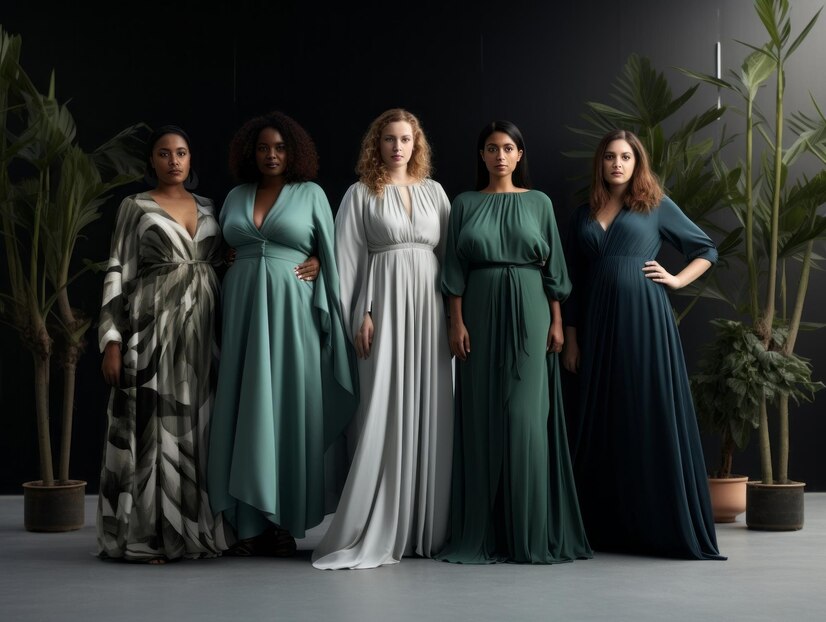In the ever-evolving world of fashion, certain trends and techniques stand the test of time, proving their enduring allure and relevance across generations. Among these is the bias cut dress, a garment construction method that has captivated designers and wearers alike since its inception in the early 20th century. In this comprehensive exploration, we delve into the history, construction, styling, and enduring appeal of bias cut dresses, uncovering the secrets behind their timeless elegance.
The Origins of Bias Cut
The term “bias cut” refers to a method of cutting fabric diagonally across its grain rather than parallel to the straight warp and weft threads. This technique allows the fabric to drape and cling to the body’s curves, creating a fluid and figure-enhancing silhouette. While the concept of bias cutting has been utilized in various cultures for centuries, it wasn’t until the 1920s that its potential in Western fashion was fully realized.
The Influence of Madeleine Vionnet
The credit for popularizing the bias cut technique in modern fashion is often attributed to the pioneering French designer Madeleine Vionnet. Renowned for her innovative approach to garment construction, Vionnet experimented extensively with bias cutting, exploiting its ability to accentuate the natural lines of the body. Her creations revolutionized women’s fashion of the 1920s and 1930s, introducing a new standard of elegance and sensuality.
Construction of Bias Cut Dresses
The key to the allure of bias cut dresses lies in their construction. Unlike garments cut on the straight grain, which tend to be structured and rigid, bias cut dresses possess a unique fluidity and suppleness. To create a bias cut garment, the fabric is laid out on the bias (diagonal) grain and then cut on the diagonal. This allows the fabric to stretch and mold to the body, enhancing both comfort and fit.
Choosing the Right Fabric
The choice of fabric plays a crucial role in the success of a bias cut dress. Lightweight, fluid materials such as silk satin, chiffon, and crepe de chine are ideal for achieving the desired drape and movement. These fabrics not only cling gracefully to the body but also possess a luxurious sheen that enhances the dress’s aesthetic appeal.
Styling Tips for Bias Cut Dresses
While bias cut dresses exude timeless elegance on their own, styling plays a significant role in maximizing their impact. Here are some tips for incorporating bias cut dresses into your wardrobe:
Accessorize Sparingly: Let the dress take center stage by keeping accessories minimal. A delicate necklace or pair of earrings can complement the look without overpowering it.
Experiment with Layering: Layering can add depth and dimension to a bias cut dress. Try pairing it with a lightweight cardigan or cropped jacket for a chic, layered ensemble.
Play with Proportions: Balance the fluidity of the dress with structured pieces such as a tailored blazer or structured handbag. This juxtaposition creates visual interest and adds a modern twist to the classic silhouette.
Choose the Right Undergarments: Since bias cut dresses hug the body’s curves, selecting the appropriate undergarments is essential. Opt for seamless or nude-colored undergarments to ensure a smooth and seamless silhouette.
Consider the Occasion: Bias cut dresses are versatile enough to be worn for various occasions, from casual daytime outings to formal evening events. Choose the appropriate style and fabric based on the event’s dress code and ambiance.
The Enduring Appeal of Bias Cut Dresses
Despite the ever-changing landscape of fashion, bias cut dresses continue to hold a special place in the hearts of designers and fashion enthusiasts alike. Their timeless elegance, flattering silhouette, and luxurious feel ensure that they remain a wardrobe staple for generations to come.
Conclusion
Bias cut dresses represent a harmonious marriage of form and function, blending exquisite craftsmanship with unparalleled comfort and style. From their humble beginnings in the ateliers of Madeleine Vionnet to their continued relevance on today’s runways, bias cut dress have stood the test of time as a symbol of timeless elegance and sophistication. Whether adorned for a special occasion or embraced as a everyday luxury, the allure of bias cut dress remains as irresistible as ever, promising to enchant fashion lovers for generations to come.







